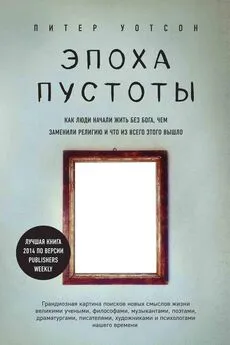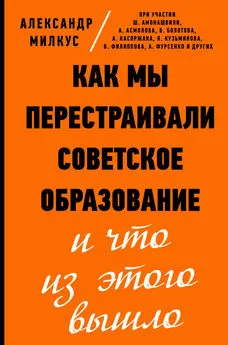Кэролайн Уилльямс - Мой продуктивный мозг [Как я проверила на себе лучшие методики саморазвития и что из этого вышло]
- Название:Мой продуктивный мозг [Как я проверила на себе лучшие методики саморазвития и что из этого вышло]
- Автор:
- Жанр:
- Издательство:Альпина Паблишер
- Год:2018
- Город:Москва
- ISBN:978-5-9614-5188-7
- Рейтинг:
- Избранное:Добавить в избранное
-
Отзывы:
-
Ваша оценка:
Кэролайн Уилльямс - Мой продуктивный мозг [Как я проверила на себе лучшие методики саморазвития и что из этого вышло] краткое содержание
Кэролайн Уилльямс, журналист и редактор, взяла на себя непростую, но увлекательную задачу — разобраться в самых передовых методиках тренировки мозга и улучшения памяти, внимания и ориентации в пространстве. Она прочитала сотни научных публикаций, встретилась с десятком нейробиологов и психологов, приняла участие во множестве экспериментов.
Вы узнаете об уникальном опыте автора и сможете выбрать лучшие методы тренировки своей памяти и внимания.
Мой продуктивный мозг [Как я проверила на себе лучшие методики саморазвития и что из этого вышло] - читать онлайн бесплатно ознакомительный отрывок
Интервал:
Закладка:
‹‹6›› Burles F. et al., (2014) «Neuroticism and Self-evaluation Measures Are Related to the Ability to Form Cognitive Maps Critical for Spatial Orientation», Behavioural Brain Research , vol. 271, p. 154–159.
‹‹7›› Kuhn S. et al., (2014) «Playing Super Mario Induces Structural Brain Plasticity: gray matter changes resulting from training with a commercial video game», Molecular Psychiatry, vol. 19, pp. 265–271.
‹‹8›› Epstein R. & Vass L., (2014) «Neural Systems for Landmark-based Wayfinding in Humans», Philosophical Transactions of the Royal Society B, vol. 5, p. 369.
‹‹9›› Вы можете опробовать тесты, которые использует Джузеппе Иария, на gettinglost.ca.
‹‹1›› Fairhall S. et al., (2014) «Temporal Integration Windows for Naturalistic Visual Sequences», PLoS One, vol. 9, p. e102248.
‹‹2›› Pomares F. B. et al., (2011) «How a Clock Can Change Your Pain? The illusion of duration and pain perception», Pain, vol. 152, pp. 230–234.
‹‹1›› http://www.theguardian.com/education/2016/mar/26/reckon-you-were-born-without-a-brain-for-maths-highly-unlikely.
‹‹2›› OECD, (2016) Equations and Inequalities: making mathematics accessible to all .
‹‹3›› Sarkar A. et al., (2014) «Cognitive Enhancement or Cognitive Cost: trait-specific outcomes of brain stimulation in the case of mathematics anxiety», The Journal of Neuroscience , vol. 34, pp. 16605–16610.
‹‹4›› Rubinsten O. et al., (2012) «Exploring the Relationship between Math Anxiety and Gender through Implicit Measurement», Frontiers in Human Neuroscience , vol. 6, p. 279.
‹‹5›› Looi C. Y. et al., (2016) «Combining Brain Stimulation and Video Game to Promote Long-term Transfer of Learning and Cognitive Enhancement», Scientific Reports , vol. 6, p. 2203.
‹‹6›› Popescu T. et al., (2016) «Transcranial Random Noise Stimulation Mitigates Increased Difficulty in an Arithmetic Learning Task», Neuropsychologia , vol. 81, pp. 255–264.
‹‹7›› Santarnecchi E. et al., (2016) «Individual Differences and Specificity of Prefrontal Gamma Frequency-tACS on Fluid Intelligence Capabilities», Cortex, vol. 75, pp. 33–43.
‹‹8›› Bechara A. et al., (2000) «Emotion, Decision Making, and the Orbitofrontal Cortex», Cerebral Cortex , vol. 10, pp. 295–307.
‹‹9›› http://www.kent.ac.uk/careers/tests/sequences.htm.
‹‹1›› Gu S. et al., (2015) «Controllability of Structural Brain Networks» , Nature Communications, vol. 6, p. 8414.
‹‹2›› New Scientist , 26 August 2015.
‹‹3›› Hofmann S. et al., (2009) «The Upside of Being Socially Anxious: psychopathic attributes and social anxiety are negatively associated», Journal of Clinical and Social Psychology , vol. 28, pp. 714–727.
‹‹4›› Kboot W. et al., (2013) «The Pervasive Problem with Placebos in Psychology: why active control groups are not sufficient to rule out placebo effects», Perspectives on Psychological Science , vol. 8, pp. 445–754.
‹‹1›› http://puzzlebox.io/orbit/.
‹‹2›› Arns M. et al., (2014) «Evaluation of Neurofeedback in ADHD: the long and winding road», Biological Psychology , vol. 98, pp. 108–115.
‹‹3›› Reiter K. et al., (2016) «Neurofeedback Treatment and Posttraumatic Stress Disorder: effectiveness of neurofeedback on post-traumatic stress disorder and the optimal choice of protocol», Journal of Nervous and Mental Disease , vol. 204, pp. 69–77.
‹‹4›› Enriquez-Geppert S. et al., (2014) «Self-regulation of Frontal-midline Theta Facilitates Memory Updating and Mental Set Shifting», Frontiers in Behavioural Neuroscience , vol. 8, p. 420.
‹‹5›› Ros T. et al., (2013) «Mind over Chatter: plastic up-regulation of the fMRI salience network directly after EEG neurofeedback», Neuroimage, vol. 65, pp. 324–335.
‹‹6›› Ruiz S. et al., (2014) «Real-time fMRI Brain Computer Interfaces: self-regulation of single brain regions to networks», Biological Psychology , vol. 95, pp. 4–20.
‹‹7›› Santarnecchi E. et al., (2016) «Individual Differences and Specificity of Prefrontal Gamma Frequency-tACS on Fluid Intelligence Capabilities», Cortex, vol. 75, pp. 33–43.
Примечания редакции
1
Пичил Т. Не откладывай на завтра. Краткий гид по борьбе с прокрастинацией. — М.: Манн, Иванов и Фербер, 2014.
2
Смак, энтузиазм, удовольствие от работы, «огонек», с которым люди чем-то занимаются ( англ .). — Прим. ред.
3
Сильные переживания, страдания (преимущественно духовные) персонажа фанфиков, любительских сочинений по мотивам известных книг или сериалов. — Прим. ред.
4
Жители планеты Вулкан, руководствующиеся исключительно логикой, персонажи сериала Star Trek. — Прим. ред.
Интервал:
Закладка:
![Обложка книги Кэролайн Уилльямс - Мой продуктивный мозг [Как я проверила на себе лучшие методики саморазвития и что из этого вышло]](/books/1096012/kerolajn-uillyams-moj-produktivnyj-mozg-kak-ya-pro.webp)


![Александр Милкус - Как мы перестраивали советское образование и что из этого вышло [litres с оптимизированными иллюстрациями]](/books/1057298/aleksandr-milkus-kak-my-perestraivali-sovetskoe-ob.webp)




